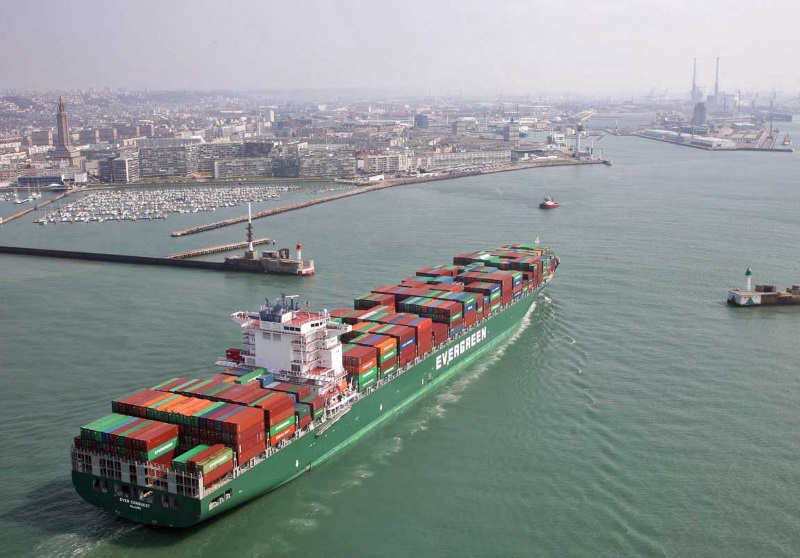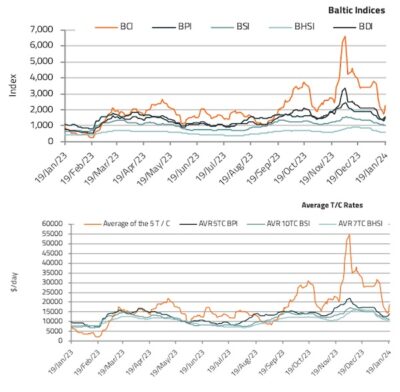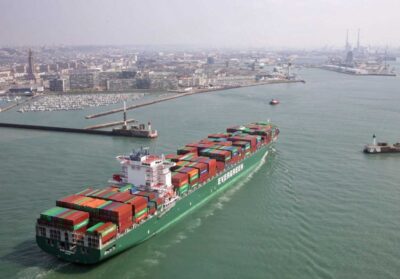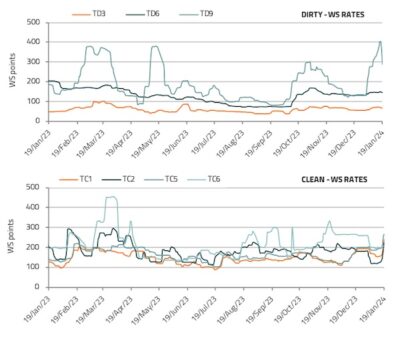Fonte: hellenicshippingnews.com The feeder sector is expected to benefit from a lower orderbook, compared to the rest of the container segment. In
Fonte: hellenicshippingnews.com
The feeder sector is expected to benefit from a lower orderbook, compared to the rest of the container segment. In its latest weekly report, shipbroker Intermodal said that “the container shipping market is currently navigating through a period of significant transformation, marked by divergent trends in vessel orders. While there is a growing demand for large container ships, expected to boost vessel capacity substantially by 2025, orders for smaller feeder vessels are on the decline, presenting a complex mix of challenges and opportunities for regional carriers. Amidst these shifts, the feeder sector stands on the cusp of a potential positive rebalancing, offering attractive prospects for shipping companies seeking to leverage these evolving market dynamics”.
According to Intermodal’s Research Analyst, Ms. Chara Georgousi, “despite the anticipated peak in containership deliveries through 2023 and 2024, the feeder sector is forecast to be the least affected. Currently, the orderbook-to-fleet ratio for feeders is at a modest 9.3%, a stark contrast to the 34% for Neo-Panamax and 14.5% for Panamax segments. This is further compounded by the feeder sector’s aging fleet, which has an average vessel age of 15.3 years, with a significant 29.21% of ships being over 20 years old. In 2023, the container sector as a whole saw a growth of just under 8%. However, the feeder segment experienced a more modest increase of 5.2%, attributable to a constrained number of new vessel deliveries, totaling 197, alongside a robust demolition market that saw 72 vessels decommissioned. This pattern of limited new deliveries is evident in the recent feeder newbuilding contracts, which show a decline from 252 in 2021 to just 70 in 2023. Similarly, the feeder demolition figures fluctuated, peaking at 72 in 2023, up from 10 in 2022. Given these dynamics, it’s projected that the feeder sector will undergo a negative fleet growth. There’s an anticipated decrease of 0.1% in 2024, deepening to around 5% in 2025. This contraction is mainly due to the limited number of incoming vessels and an impending need for fleet renewal, reflecting a cautious approach to feeder vessel investments and a focus on updating the existing aging fleet”.
Meanwhile, “the feeder market is primarily concentrated on intra-regional routes with more than 70% deployment. A significant driver of demand in this sector is the robustness of Asian intra-regional trade, encompassing regions like the Middle East, Southeast Asia, China, and the Indian subcontinent. This demand is further fueled by a notable shift in production patterns. As manufacturing gradually relocates from China, there’s an observable transition towards the Indian subcontinent. This strategic migration of production centers to SE Asia and India is reshaping trade routes and cargo flows, thereby amplifying the role of feeder vessels in these areas”, Ms. Georgousi said.
Intermodal’s analyst added that “moreover, the anticipated expansion and enhancement of port infrastructure and capacity are set to play a crucial role in shaping the future of the market. This gradual yet significant development is expected to open new avenues in the sector. As larger hub ports upgrade their facilities, there will be an increased need for efficient and agile feeder vessels. These vessels will bridge the gap between these major ports and smaller, emerging ports in rapidly developing regions, highlighting the sector’s growing significance. Reflecting these trends, the feeder sector is poised for notable growth. Projections indicate a potential increase in demand of up to 4% in the medium term. This expected uptick underlines the sector’s evolving dynamics and its critical role in the global maritime trade network. In addition to the anticipated growth and opportunities, the feeder sector is also bracing for several challenges in 2024. A significant hurdle is the persistent low water issues at the Panama Canal, which are projected to continue into 2024 and possibly into 2025, and reduce vessel transits through this crucial waterway. The impact is particularly severe on transshipment activities, with East Asian ports, vital for trans-Pacific trade, being notably affected”.
She added that “another looming challenge is the European Union’s introduction of a carbon tax on ship emissions. This new regulation is expected to significantly influence vessel deployment strategies. To minimize tax liabilities, shipowners are likely to prioritize deploying newer, less polluting feeder ships in European waters. Consequently, this could lead to the withdrawal of modern tonnage from Asian routes. The result will be a conspicuous shift, leaving Asian ports to manage with older, less fuel-efficient feeder vessels. This realignment is likely to exacerbate the shortage of small feeder vessels in Asia, leading to an increasingly aging fleet of feeder ships in the region”, Ms. Georgousi concluded.




